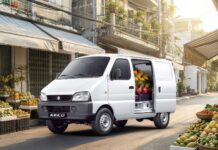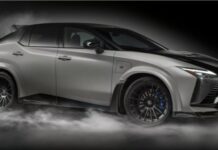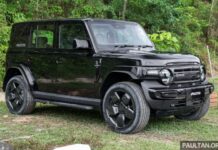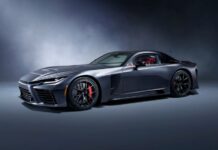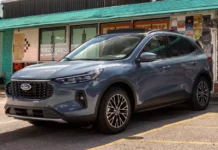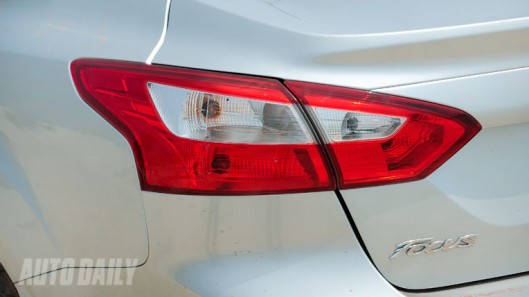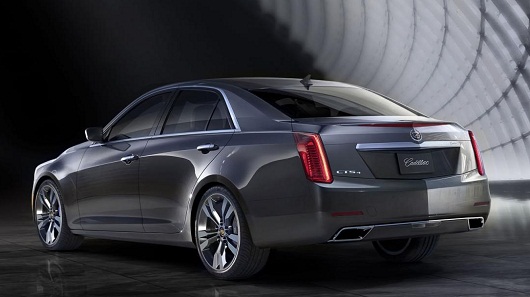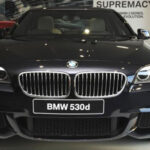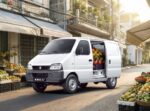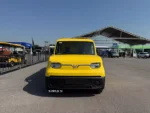The E-class and the letter “E” is taken from the German term “Einspritz” which means “fuel injection,” “Touareg” by Volkswagen refers to a tribe residing in the vicinity of the Sahara Desert, Corolla means a garland or Gentra is a combination of gentleman – a refined man and transport – a means of transportation…
>>> Hitler, Volkswagen, and “the beetle”
>>> The evolution of Ford Motor’s logo
>>> Mercedes-Benz and the three-pointed star symbol
>>> The origin of the name “Jeep”
These are things we do not know or little known about the origins of the names of commonly used cars. There are countless ways to name cars and what follows is just a small part of the history of the global automotive industry.
How BMW names its cars
Due to difficulties in naming, BMW wisely chose engine capacity codes to name its products. The Series 5 was the first BMW model to be named after engine capacity in 1972. If a car is named 525, it means it belongs to the Series 5 and has a capacity of 2.5 liters.
Later, when BMW equipped both diesel and petrol engines, letters like “d” were added after the car name to indicate diesel vehicles, and the letter “i” was added to indicate petrol vehicles. The letter “L” in the Series 7 denotes a long wheelbase.
Mercedes-Benz
Mercedes-Benz’s products follow a similar naming convention to BMW, with some differences. The A-class and C-class of Mercedes are related to the European car classification system, but they originated from the birth of the E-class in 1986. At that time, after a series of names, Mercedes decided to name the W124 model as E-class, with the letter “E” taken from the German term “Einspritz,” which means “fuel injection.” The E-class was the first Mercedes product to use fuel injection technology for a 6-cylinder engine.
When E-class models were first introduced, the letter “E” came after the engine capacity instead of before, as it is now. By 1994, when the C-class was introduced, Mercedes started putting the letter at the beginning. Therefore, a car with the name 300E means it belongs to the E-class and predates 1994.
After the E-class, the lower-ranking models were designated with alphabets such as C-class in 1994 and A-class in 1997. The higher-ranking products with “SEL,” “SEC,” “SE” designations were changed to S-class in 1994.
Initially, Mercedes also used engine capacity to number its products. But later, due to changes in engines and other reasons, the numbers no longer corresponded to the engine capacity. For example, the C240 has a capacity of 2.6 liters instead of 2.4 liters.
Toyota
Toyota particularly likes crowns, so models like Corolla, Crown, and Camry all originated from this preference. Among the mass-market models, the Toyota Corolla should be mentioned first because it is the best-selling model. In English, Corolla means a garland. Alongside the Corolla, this Japanese carmaker also has another model related to crowns, which is the Crown, a higher-class model compared to the Corolla and naturally more expensive than laurel leaves. Previously, the Toyota Crown was used to transport high-ranking officials of the state.
Running out of English words to represent the object every beauty queen wants to wear, Toyota had to transliterate from Kanmuri (meaning crown) in Japanese to English to name their model that would bring unexpected success—Camry. However, worldwide, consumers and especially sales staff still prefer to call the Camry the “My Car” by rearranging the letters of “Camry.”
Ford
When it comes to the trend of using the initials of the company name, Ford Motor cannot be left out. The second-largest American carmaker has products that start with the letter “F,” such as Fairlane, Falcon, Fiesta, Five Hundred, Freestar, Freestyle, Frontenac, Fusion, and Focus—the successful models of Ford in Europe.
Not as suggestive as Toyota, but the name Laser from Ford is easy to remember because it evokes the idea of a very common light – “laser beam.” Escape, on the other hand, reflects the ability to escape, flexibility, and strength.
Honda
Compared to the other carmakers, Honda has much more practical naming conventions. For example, the Civic model takes the term “Civic” by abbreviating the term “Civilization” to imply that it is a car that brings civilization to villages as part of the process of urbanization. The Civic has lived up to Honda’s hope and become the best-selling model of the manufacturer.
GM
GM Daewoo is perhaps the most gender-biased carmaker. The company associated Gentra with the image of an elegant owner (Gentra is a combination of gentleman – a refined man and transport – a means of transportation). As for the Lacetti, the company wanted to convey the image of agility, strength, youthfulness, and perseverance through the word’s Latin origin – Lacertus.
Other carmakers
In addition to using abbreviations like CTS, DTS for Cadillac, some carmakers insist on naming their models based on reality, such as Volkswagen. The largest European carmaker took the name “Touareg” to refer to a tribe residing near the Sahara Desert for their versatile sports car. Hyundai, the largest carmaker in South Korea, also adopts a similar approach in naming models like Tucson (a city in Arizona, USA) or Tiburon (a town in California, USA).
Acura, Honda’s independent luxury marque in North America, used to have beautiful names like Integra (perfect), Legend (legendary), and Vigor (powerful). But later, Acura added the letter “X” to names like MDX, TSX, RSX. The trend of adding the suffix “X” is also common at Infiniti. Nissan’s luxury brand in the US often uses numbers (such as “35,” “45”) and alphabets like G, M, Q, QX, or FX. No one knows why Infiniti used these alphabets to name its products. One theory suggests that Infiniti had no reasonable letters left, so it had to use the remaining ones.
Although the car naming war gives most carmakers headaches, occasionally there are reasonable copies like the suffix “lander.” It was first used on the Land Rover Freelander. Later came Outlander from Mitsubishi, Uplander from Chevrolet, and Highlander from Toyota. Surely, there will be no more car models with the suffix “lander” beyond those mentioned.
Naming conventions sometimes depend on the target market of the carmaker. Jeep, specialized in producing military vehicles, named its first model Liberty to symbolize freedom, then Commander for those in command, Patriot for nationalism, and “cooler” names like Wrangler for cowboys. Suzuki, focusing on small cars, often gives its models names like “Swift – a bird’s name” and “Aerio – bird’s nest.” However, there are exceptions like the Grand Vitara.
Compiled by Thu Ha (TTTD)

